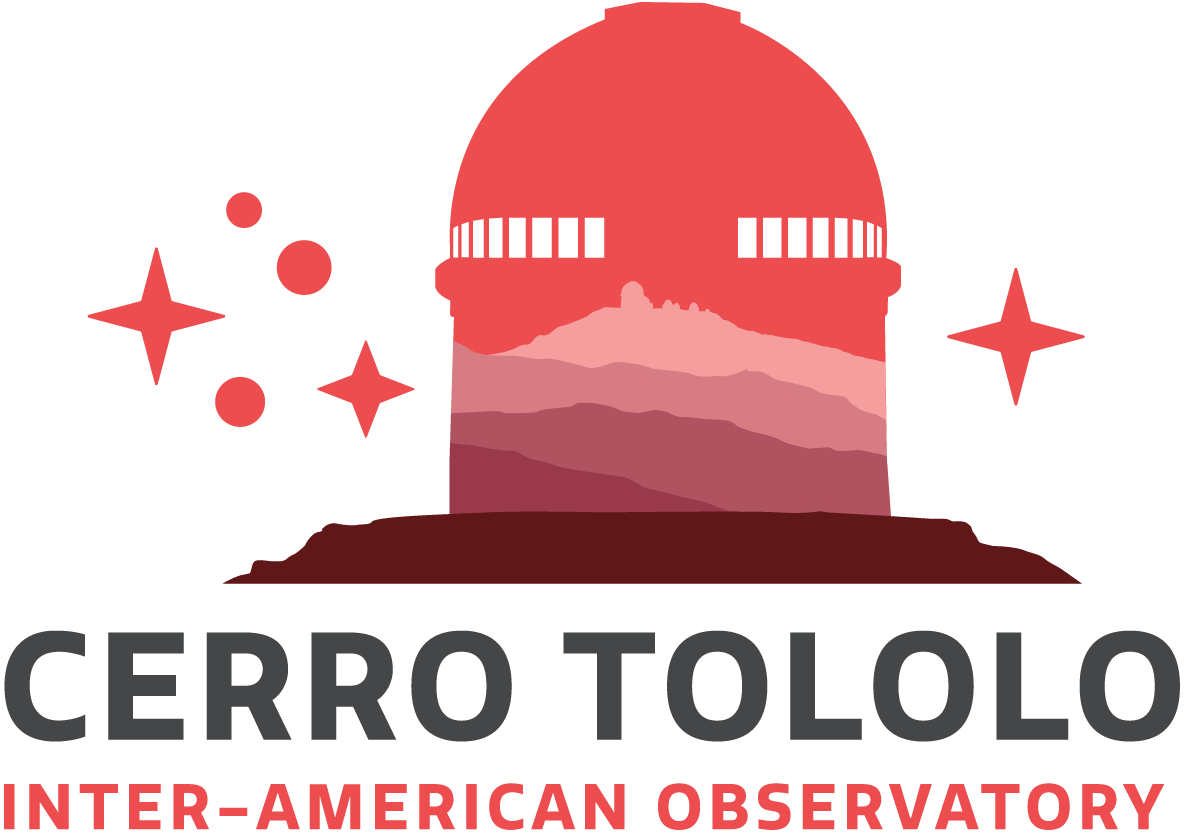NOAO: Dark Energy Camera Dedication Begins Celebration of 50th Anniversary of Cerro Tololo Inter-American Observatory
1 November 2012
On November 9, 2012, ceremonies on the summit of Cerro Tololo, Chile will mark the dedication of the Dark Energy Camera and the beginning of the 50th anniversary celebration of Cerro Tololo Inter-American Observatory (CTIO). Speakers will include Drs. David Silva (NOAO Director), R. Christopher Smith (Director of AURA Observatories in Chile), Nicole van der Bliek (CTIO Director), Joshua Frieman (Director of the Dark Energy Survey), Timothy Abbott and Alistair Walker (CTIO), and Brenna Flaugher (Fermilab).
The Dark Energy Camera installed on the 4-meter Victor M. Blanco telescope at CTIO will conduct a powerful survey collecting light in each snapshot from 100,000 galaxies located up to 8 billion light years away. The camera has 62 charged-coupled devices (570-megapixels) with an unprecedented sensitivity to very red light, creating the most powerful sky-mapping machine ever available. The Dark Energy Survey will attempt to answer one of cosmology’s greatest mysteries–why the expansion of the universe is speeding up rather than slowing down due to gravity. [1]
“Bringing the Dark Energy Camera online and making it available for the astronomical community through NOAO’s open access telescope allocation is a milestone in the history of Cerro Tololo,” said Nicole van der Bliek, Director of the Cerro Tololo Inter-American Observatory. “We are very proud that we start the celebration of 50 years of service by CTIO to U.S. astronomers with the dedication of this brand new capability.” The Dark Energy Survey is expected to begin after the camera is fully tested, about one month after the dedication. This wide-field survey will create detailed color images of one-eighth of the sky, or 5,000 square degrees, to discover and measure 300 million galaxies, 100,000 galaxy clusters, and 4,000 supernovae. [2]
Cerro Tololo Inter-American Observatory was founded 50 years ago on November 23, 1962 when Cerro Tololo was chosen as the site for the U.S. southern hemisphere observatory complex and the observatory’s current name was adopted. An historic milestone was the construction of what was then the largest telescope in the southern hemisphere, the 4-meter Blanco telescope. The Blanco mirror arrived on Cerro Tololo in September 1974, and on November 8 of that year an informal prime focus “first-light” ceremony was held. Visiting astronomers first started observing with this telescope in January 1976. The principal telescopes on the AURA sites on Cerro Tololo and nearby Cerro Pachón are the 4-m Victor M. Blanco Telescope, the 4.1-m Southern Astrophysical Research (SOAR) telescope, and one of the 8-m telescopes comprising the Gemini Observatory. More than 10 other telescopes and astronomical projects also share the Cerro Tololo site. [3]
Photos and background information available at: http://www.noao.edu/news/2012/pr1205.php
Released by the National Optical Astronomy Observatory (NOAO) on behalf of the Dark Energy Survey collaboration. NOAO is operated by the Association of Universities for Research in Astronomy (AURA), Inc. under cooperative agreement with the National Science Foundation.
Notes
[1] The Dark Energy Camera was constructed at the U.S. Department of Energy’s (DOE) Fermi National Accelerator Laboratory in Batavia, Illinois, and mounted on the Victor M. Blanco telescope at the National Science Foundation’s Cerro Tololo Inter-American Observatory (CTIO) in Chile, which is the southern branch of the U.S. National Optical Astronomy Observatory (NOAO). With this device, roughly the size of a phone booth, astronomers and physicists will probe the mystery of dark energy, the force they believe is causing the universe to expand faster and faster.
[2] More information about the Dark Energy Survey, including the list of participating institutions, is available at the project website: http://www.darkenergysurvey.org.
The Dark Energy Collaboration is an international collaboration of research institutions from around the world and includes research collaborations in the U.S., United Kingdom, Brazil, Germany, Spain, and Switzerland. More information can be found at the website: http://www.darkenergysurvey.org/collaboration/
The Dark Energy Survey is supported by funding from the U.S. Department of Energy; the National Science Foundation; funding agencies in the United Kingdom, Spain, Brazil, Germany, and Switzerland; and the participating DES institutions. Fermilab is America’s premier national laboratory for particle physics research. A U.S. Department of Energy Office of Science laboratory, Fermilab is located near Chicago, Illinois, and operated under contract by the Fermi Research Alliance, LLC.
[3] A brief history of CTIO and historic highlights in this history can be found at http://www.ctio.noao.edu/noao/content/about-ctio-0
Contacts
Nicole van der Bliek
Director, Cerro Tololo Inter-American Observatory
NOAO Astronomer, Chile
Tel: +56-51-205205
Email: nvdbliek@ctio.noao.edu
Dr. Alistair Walker
Former Director of the Cerro Tololo Inter-American Observatory and NOAO Astronomer
Chile
Tel: +56-51-205305
Email: awalker@ctio.noao.edu
Dr. R. Christopher Smith
Astronomer and Head of AURA Observatories in Chile
Chile
Tel: +56-51-205214
Email: csmith@ctio.noao.edu
About the Release
| Release No.: | noao1205 |
| Legacy ID: | NOAO 12-05 |
| Facility: | Víctor M. Blanco 4-meter Telescope |
| Instruments: | DECam |





